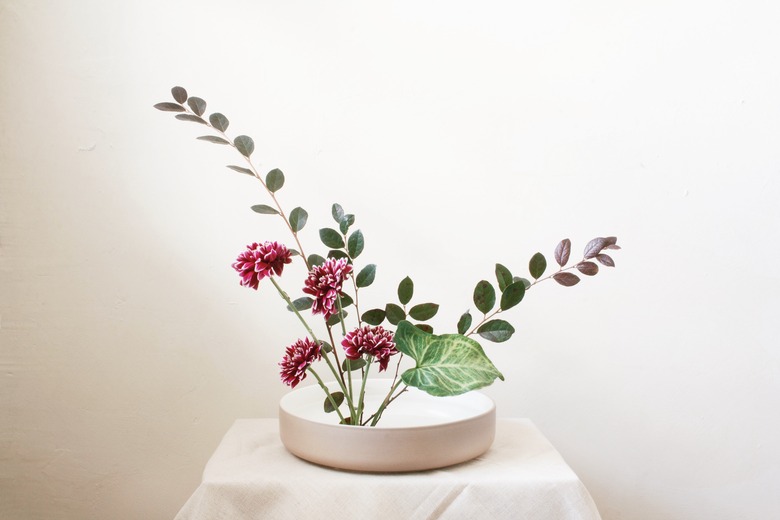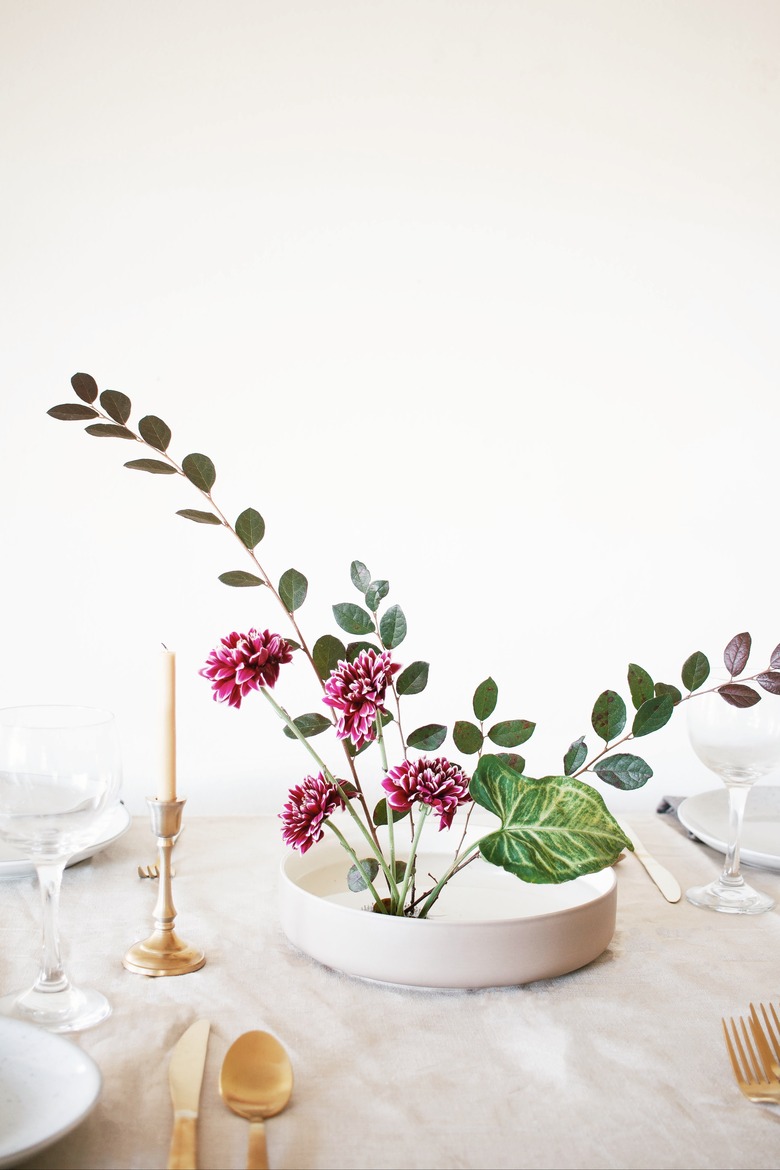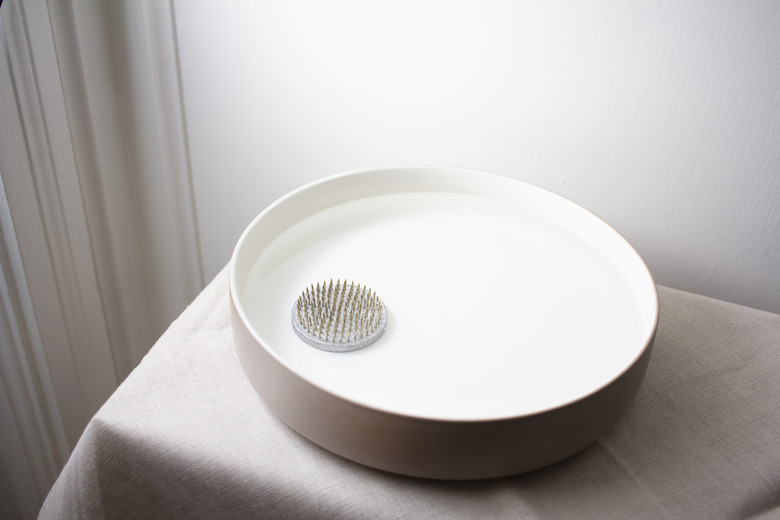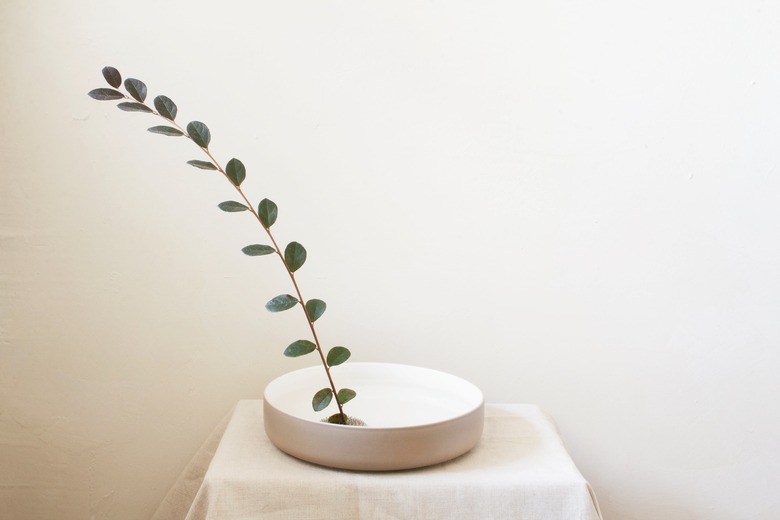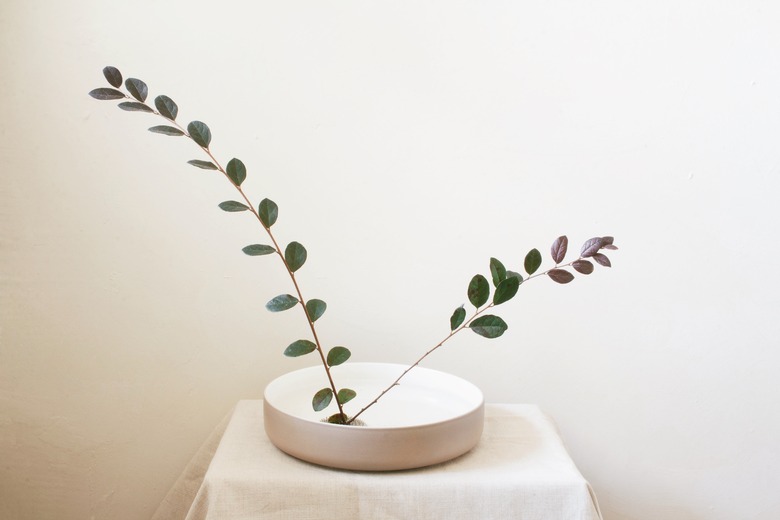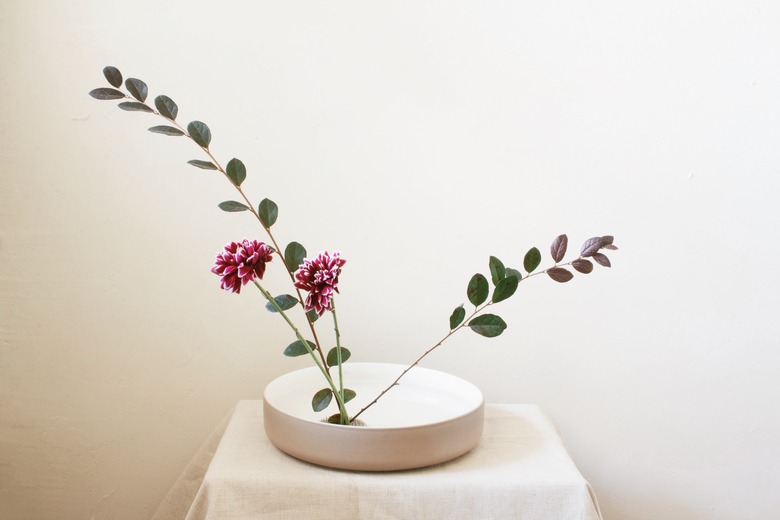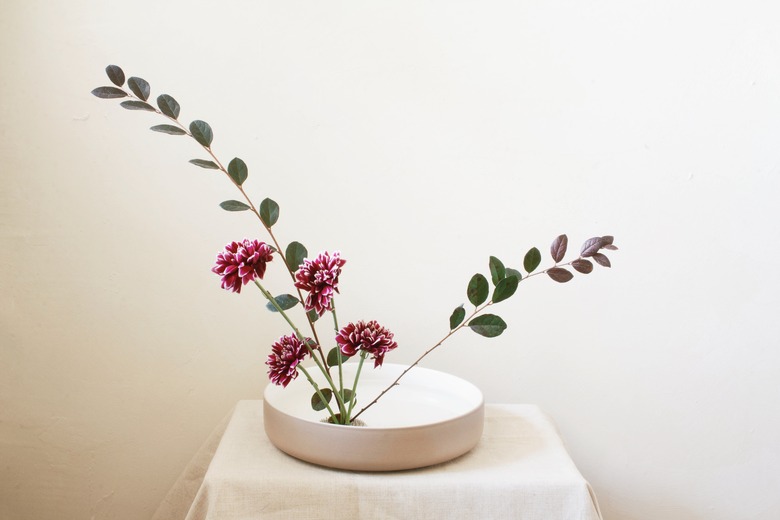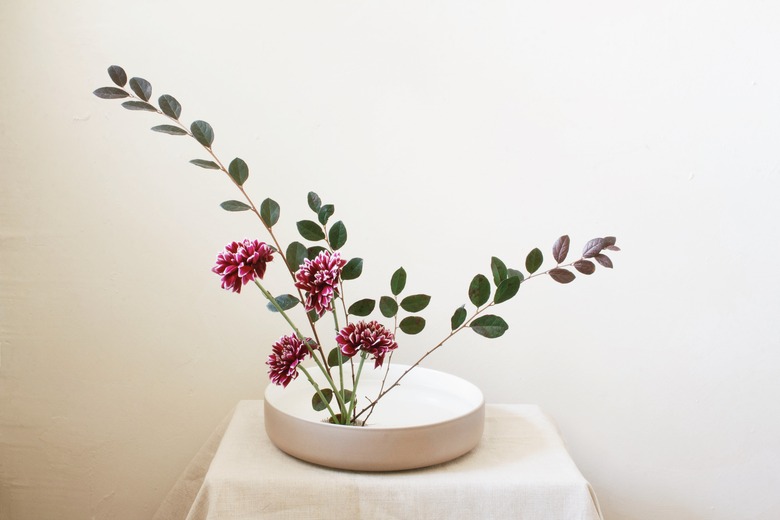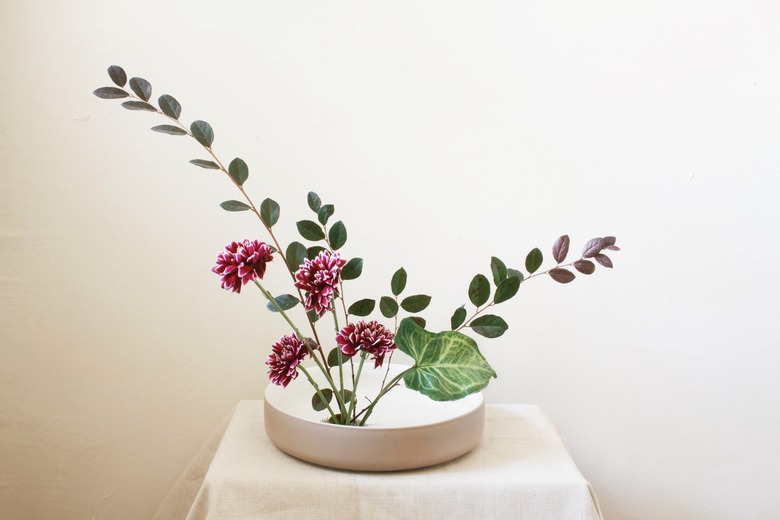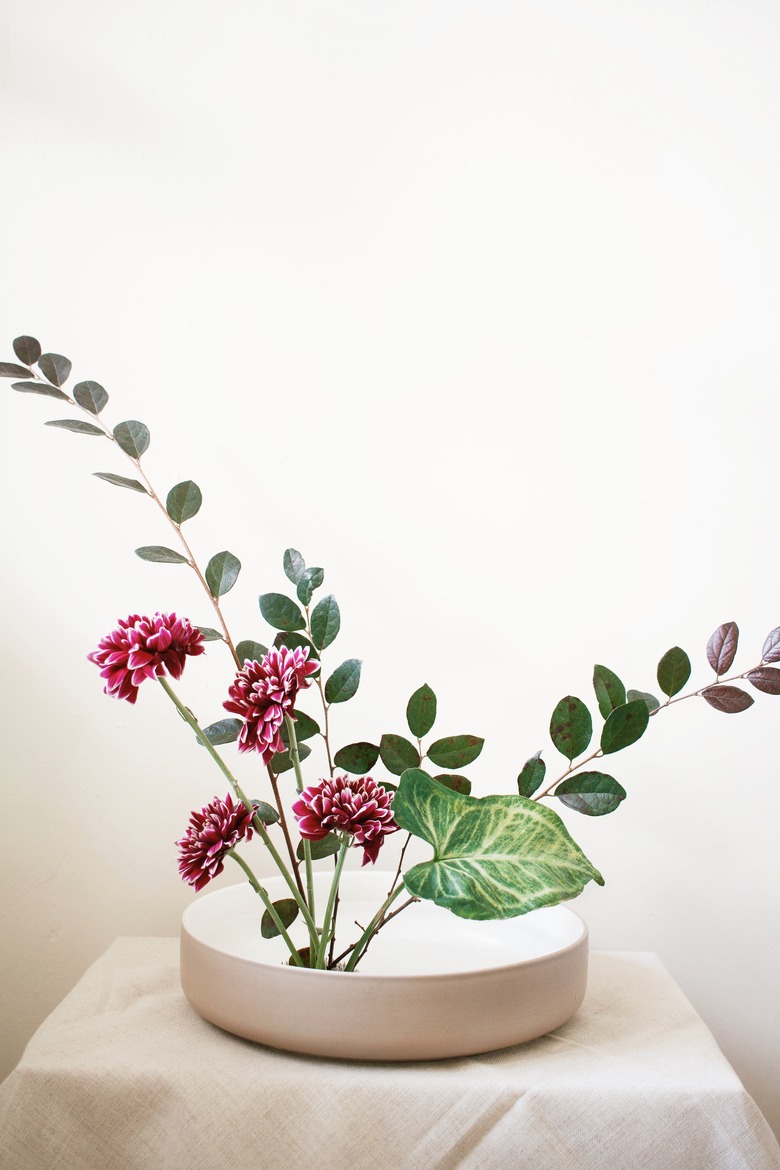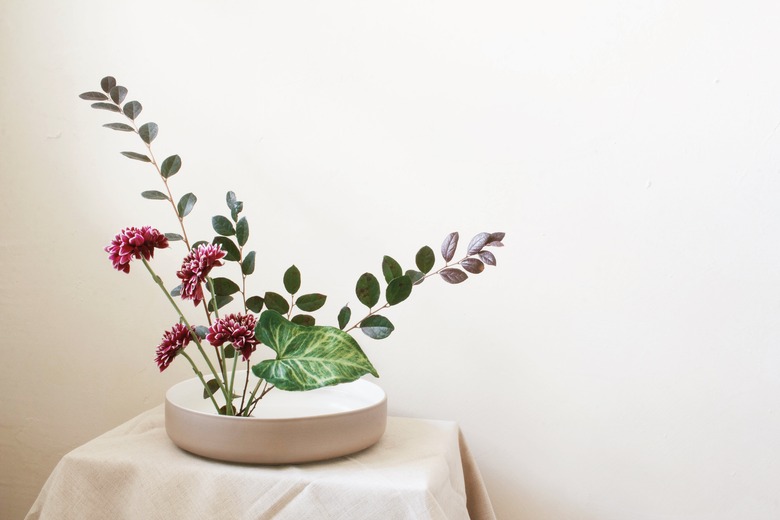How To Create A Charming Ikebana-Inspired Arrangement
The Japanese art of floral arrangement known as ikebana, or "making flowers alive," has been around for centuries, but its minimal aesthetic easily fits into any modern-day setting. More than just an art form, there is a meditative aspect to the process, as it's meant to be done in silence, allowing the flower arranger to connect with the beauty in nature. Using only a few stems, one must be deliberate and thoughtful in the placement of each floral to create harmony and balance. Though there are over a thousand schools of ikebana and many various styles, we're focusing on the Moribana slanting style, in which flowers are arranged in a shallow dish using a kenzan (flower frog). We're crushing hard on the sculptural quality this type of arrangement brings to a space, and we happen to think it'd make a gorgeous centerpiece for a wedding or special occasion, too.
Things Needed
-
Floral shears or scissors
-
Florals (we used dahlias, loropetalum, and caladium)
Tip
One of the great attributes of ikebana is you don't need a lot of flowers to create a beautiful arrangement. We recommend selecting two or three different florals that have various colors or textures, and choosing stems that will drape versus stand upright.
Step 1
Place the kenzan (flower frog) in the bowl, positioning it toward the front left side. This will ensure an asymmetrical arrangement, one of the pillars of the ikebana aesthetic. Fill the bowl with enough water to cover the kenzan.
Step 2
Start with your longest stem, which is known as the shin and represents heaven. Its length should be roughly one-and-a-half to two times the diameter of the bowl plus the height of the bowl. Insert the bottom of the stem into the spikes of the kenzan at a 15-degree angle, positioning it toward the center back, and let it lean toward the left. Here, we've used a long stem of leaves clipped from a loropetalum bush.
Step 3
Next, place your medium stem, which is called the soe and represents man. The length should be approximately two-thirds the length of the shin. We've used another loropetalum stem here, and positioned it at a 45-degree angle toward the right. You'll notice we trimmed the leaves from the base of the stem to leave some negative space, another pillar of the ikebana aesthetic.
Step 4
Now place your shortest stem, known as the tai, which represents earth. The length should be two-thirds the length of the soe. We've used two stems of dahlias here and placed them upright in the center of the kenzan, allowing them to drape naturally in any direction. In this case, they drape to the left.
Step 5
With your three main stems now in place, this is the point in the process when your individual creativity comes into play, as you place filler stems to create balance and beauty in the arrangement. For more color, we added two more dahlia stems into the center of the kenzan, keeping their lengths short to create height variation.
Next, we added two more loropetalum stems to fill in the center of the arrangement, keeping in mind the principles of asymmetry, negative space, and balance. You'll notice none of the filler stems are longer than the shin or soe.
Step 6
Lastly, we placed a caladium leaf low in the arrangement, leaning it to the right side to balance out the dahlias on the left. Resist the urge to keep adding more filler, as the arrangement should feel sparse and minimal.
We hope you enjoy the quiet nature of creating an ikebana-inspired arrangement as much as we did! We're sure it'll bring beauty wherever you decide to display it.
